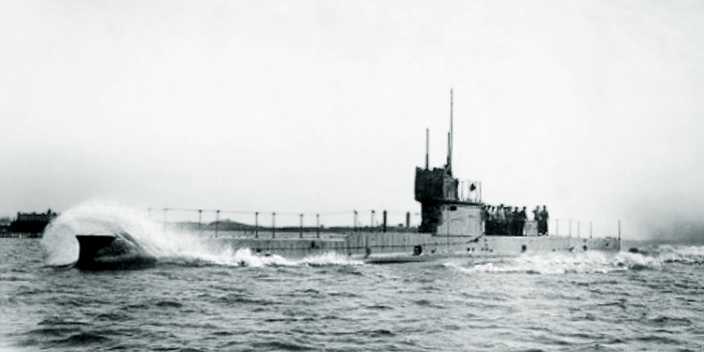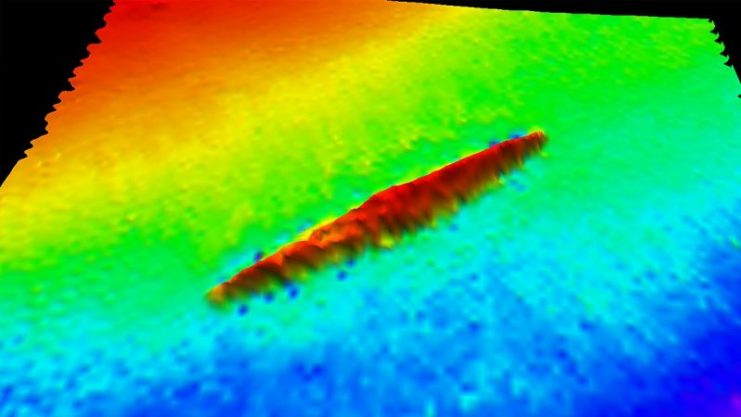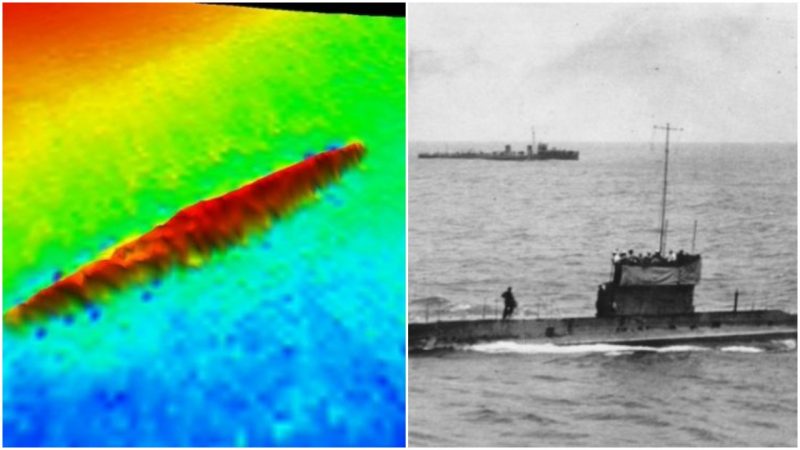On September 14, 1914, His Majesty’s Australian Submarine AE1 disappeared from sight and was never seen again until December of 2017 when it was finally found off the coast of the Duke of York Islands near Papua New Guinea. The exact coordinates have not been revealed to the public in order to stave off treasure hunters.
The sub was found by a team comprised of Rear Admiral Peter Briggs, representatives of the Australian government, and a private association gathered by John Mullen, chairman of Telstra, Australia’s largest cell phone provider. Using the survey ship Fugro Equator and the latest underwater technology the wreck was found and then photographed by underwater cameras.
Rear Admiral Briggs, President of the Submarine Institute of Australia and a submarine expert, believes the sub was in an uncontrolled dive when it hit the bottom with great force. It appeared that the submarine had suffered an explosion after hitting the bottom, most likely caused by one of the eight torpedoes carried by the sub being detonated.

Although more study and photos are needed, Rear Admiral Briggs stated that the submarine was considered a war grave for the thirty-five men on board and will not be recovered.
The HMAS AE1 was built by Vickers Ltd at Barrow-in-Furness, England, and was launched in May of 1913. She was the first submarine of the new Royal Australian Navy. The vessel was manned by a crew made up from sailors of both the British Royal Navy and the Royal Australian Navy under the command of Lieutenant Commander Thomas Fleming Besant, RN. In March of 1914, the submarine left England and traveled to Sydney, Australia, by way of the Suez Canal arriving in May. Most of the trip was spent on the water’s surface.

When World War I started, the AE1 was assigned to capture the German-held New Guinea islands. The mission was accomplished on September 13, 1914. The next day the AE1 was scheduled to meet up with the naval destroyer HMAS Parramatta to patrol St. Georges Channel. After being advised of his orders by the Parramatta’s commanding officer, Lieutenant Commander Besant steered the sub northeast. The night was rather hazy, and at 2:30am the Parramatta received a message from AE1 asking what sort of visibility the ship was experiencing. The ship replied, “about five miles” and changed course to rendezvous with the sub. When the Parramatta reached the last known coordinates of the AE1, the submarine was nowhere to be found. After a while, Lieutenant Warren made the assumption that the AE1 had gone back to Credner Island and steamed off to meet her.
After waiting an hour in port the Parramatta and HMAS Yarra were sent out to search for the sub. With no luck in finding it, HMAS Sydney, HMA Encounter, and HMA Warrego joined the search party. The search continued for three days with no results. Another search was attempted in 1976 but the submarine, again, was not located. The fate of the AE1 and its crew remained a mystery for one hundred and three years until Rear Admiral Briggs finally located her nearly 300 meters underwater. The Australian government then contacted the descendants of the crew to inform them of the discovery.

Australian Minister of Defense Marise Payne stated, “I truly believe this will bring peace of mind to the family and descendants of the crew who lost their lives on board. We will work closely with the PNG Government in the coming weeks and months to consider a lasting commemoration in recognition of the crew, and, importantly, to preserve the site.”
